Whale of a find in Singapore
Rare sight of whale's carcass has caused a stir among residents and researchers here










PHOTO: LIM YAOHUI FOR THE STRAITS TIMES

An adult female sperm whale, 10.6m long and weighing between 8 and 10 tonnes, was found in Singapore waters for the first time.
Sperm whales are the largest toothed whales and largest carnivorous animals on earth. Adult males can grow longer than 20m and weigh over 50 tonnes. The species is regarded by the International Union for Conservation of Nature as vulnerable to extinction.
The mammal was found floating off Jurong Island last Friday. Mr Jailani Salleh, a worker in the oil industry, posted a video of his sighting on Facebook group Nostalgic Singapore on Friday morning.
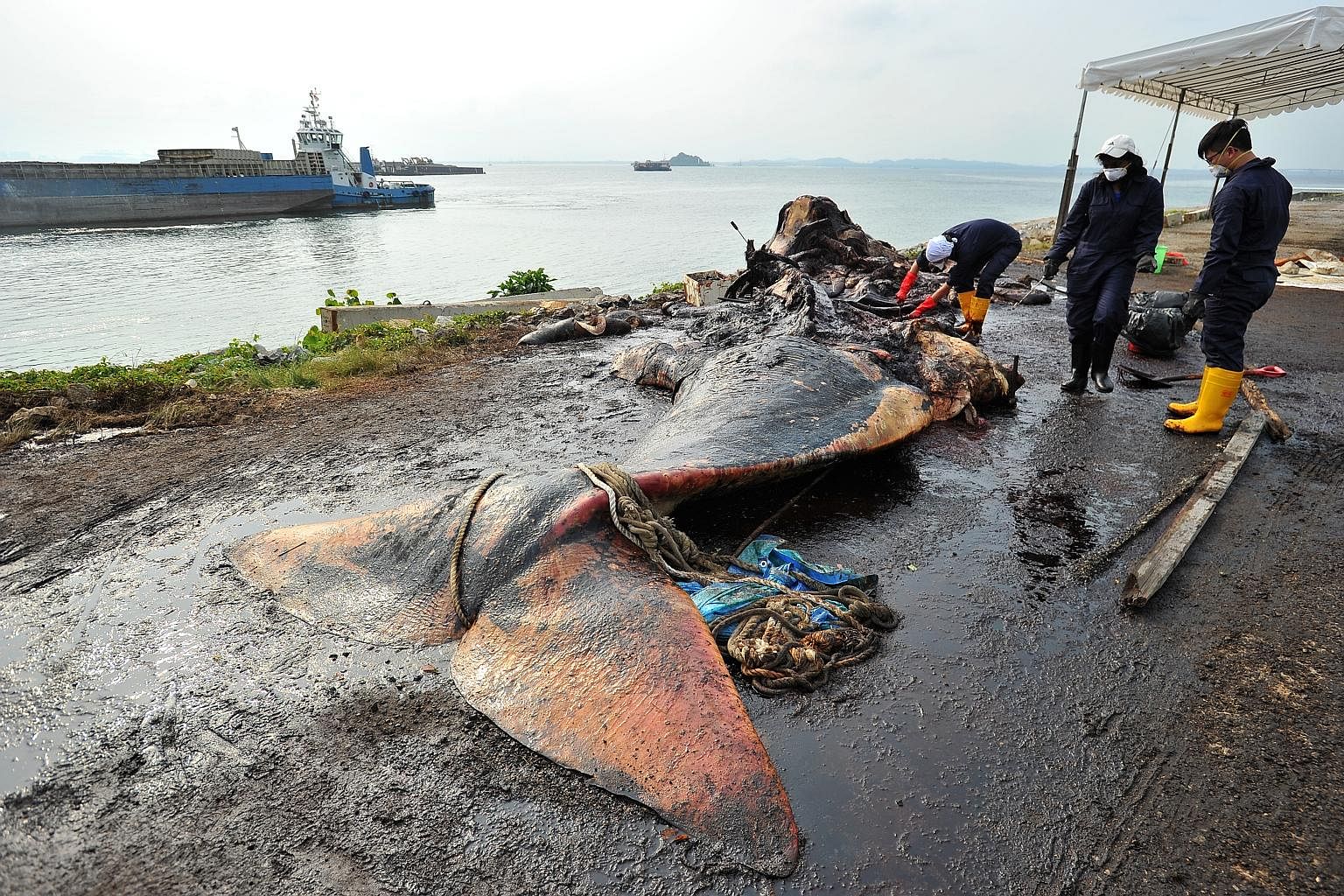
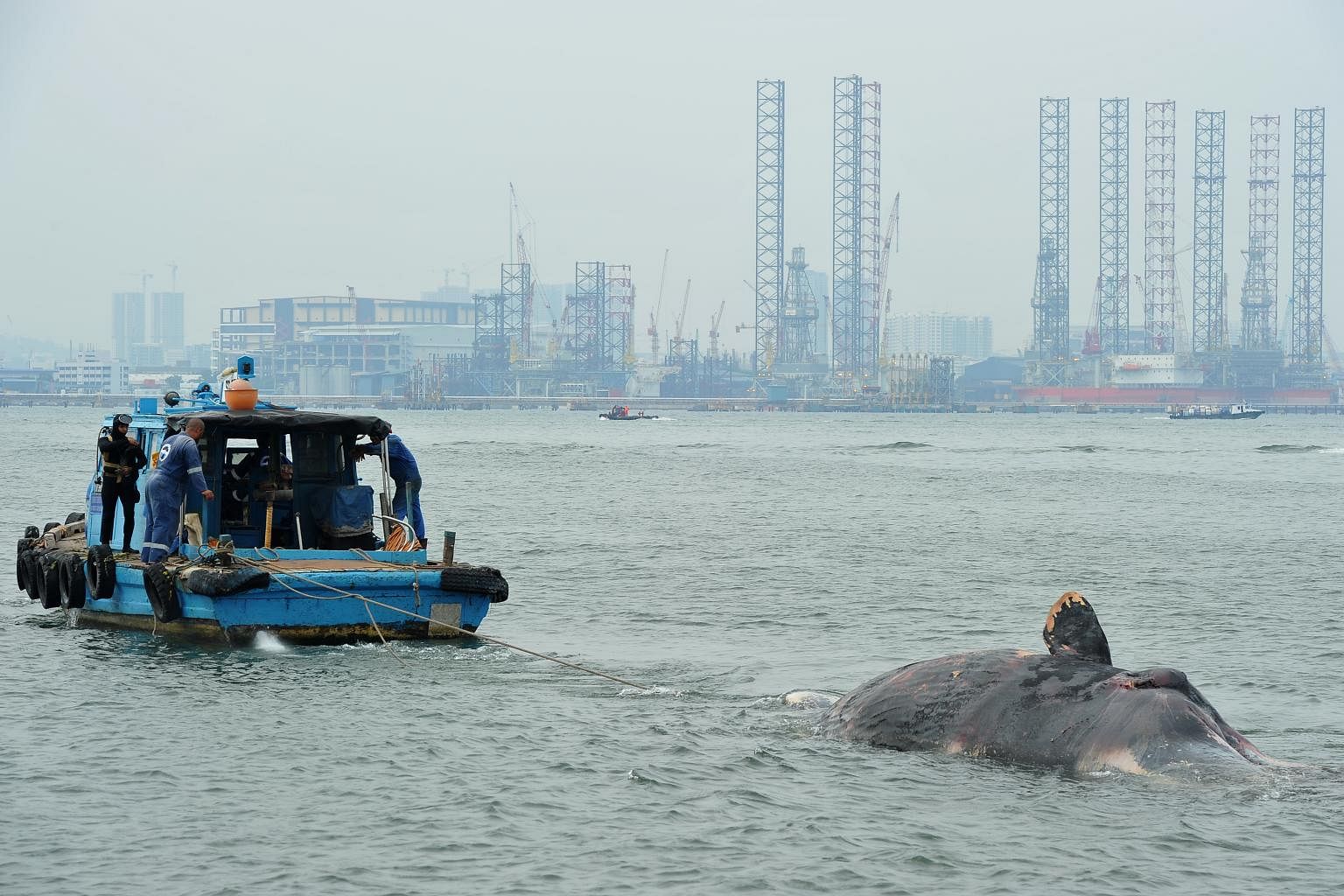
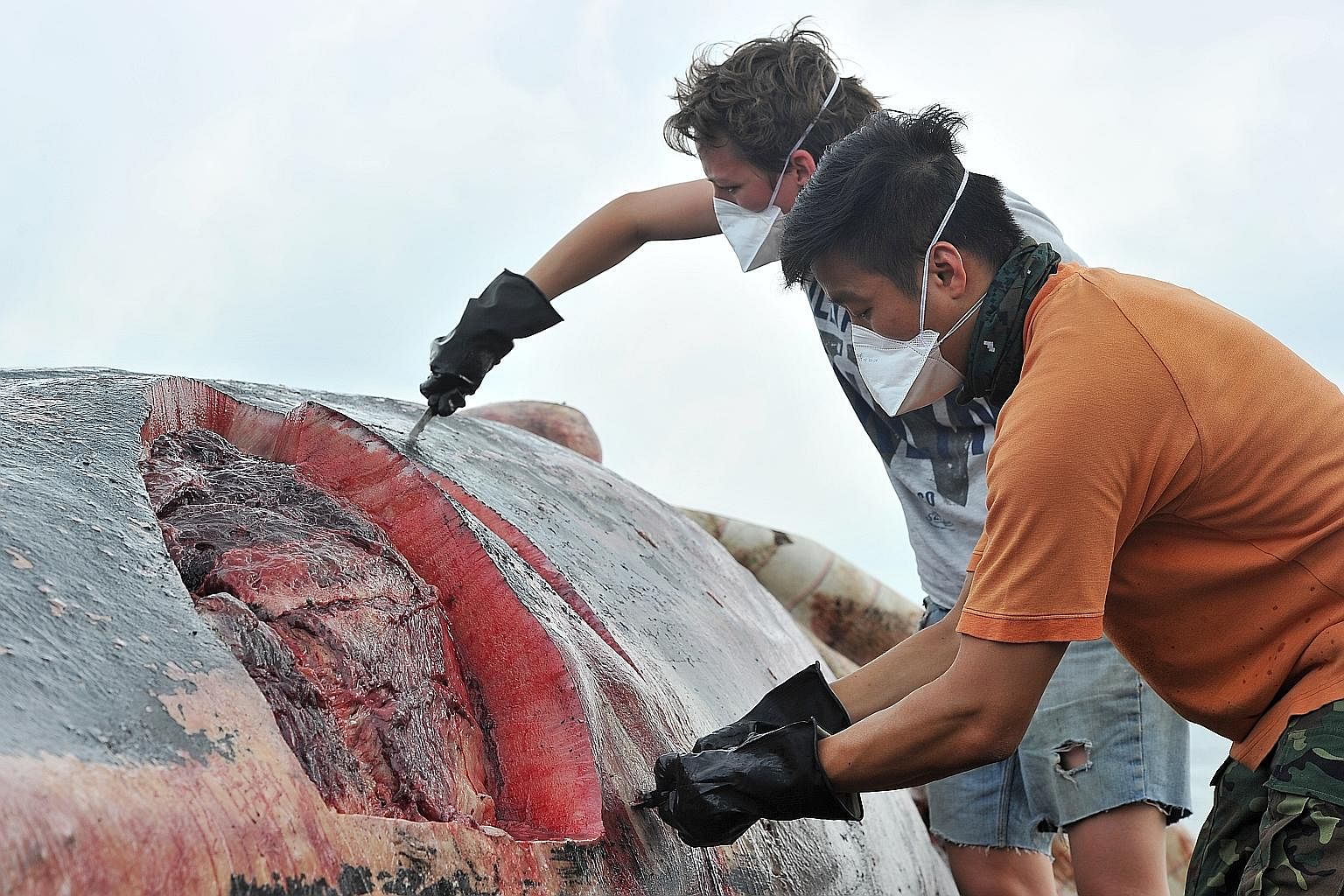
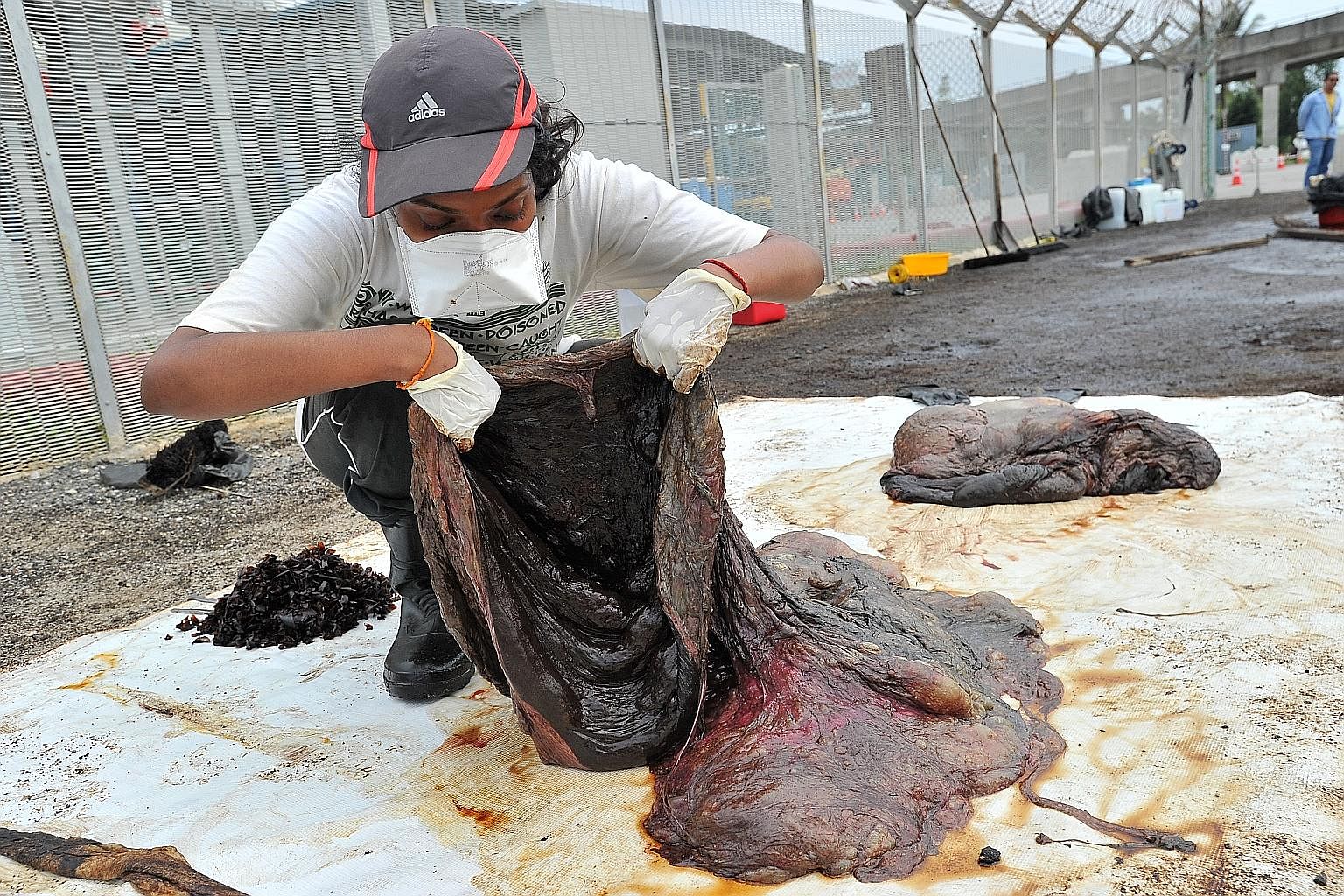
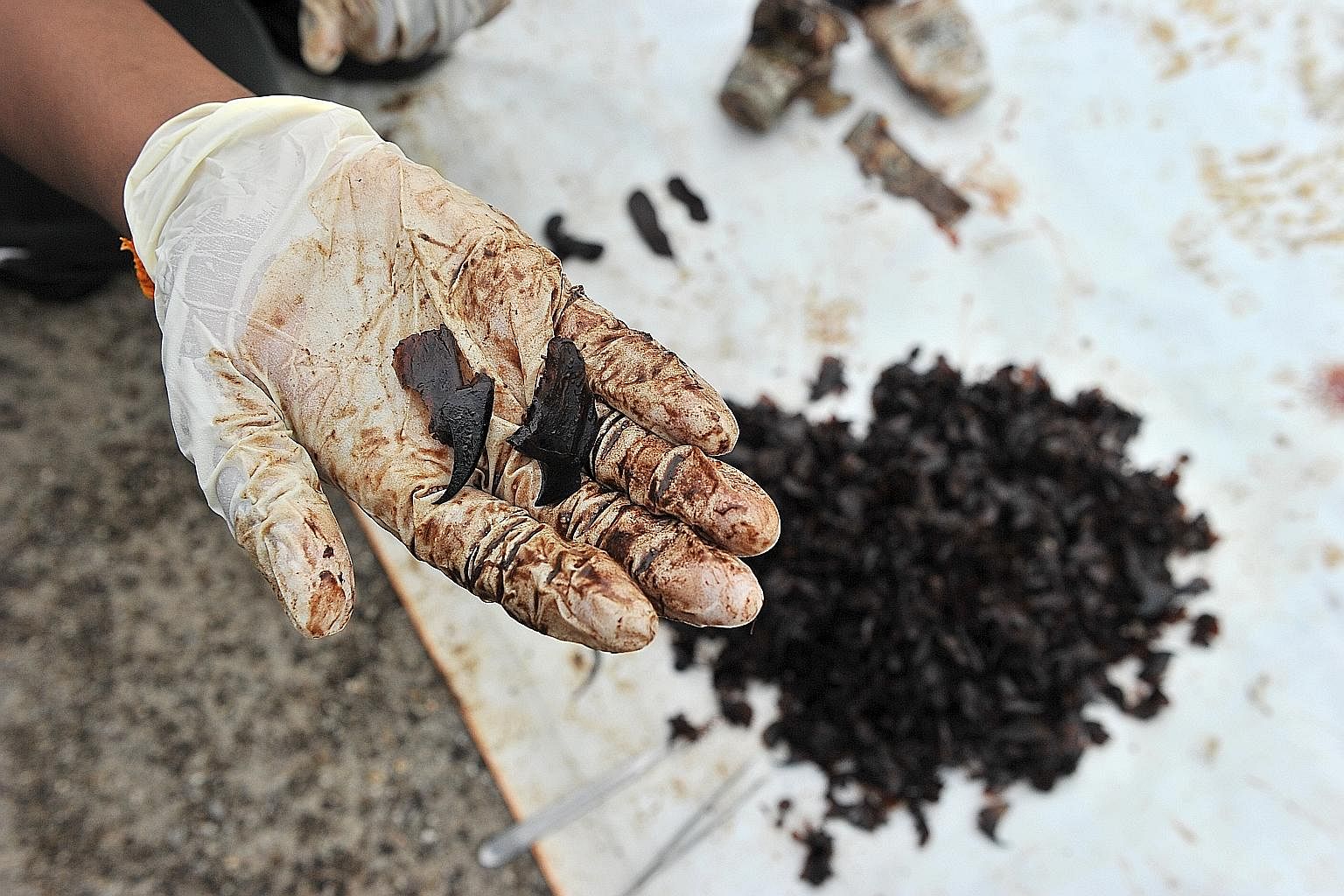
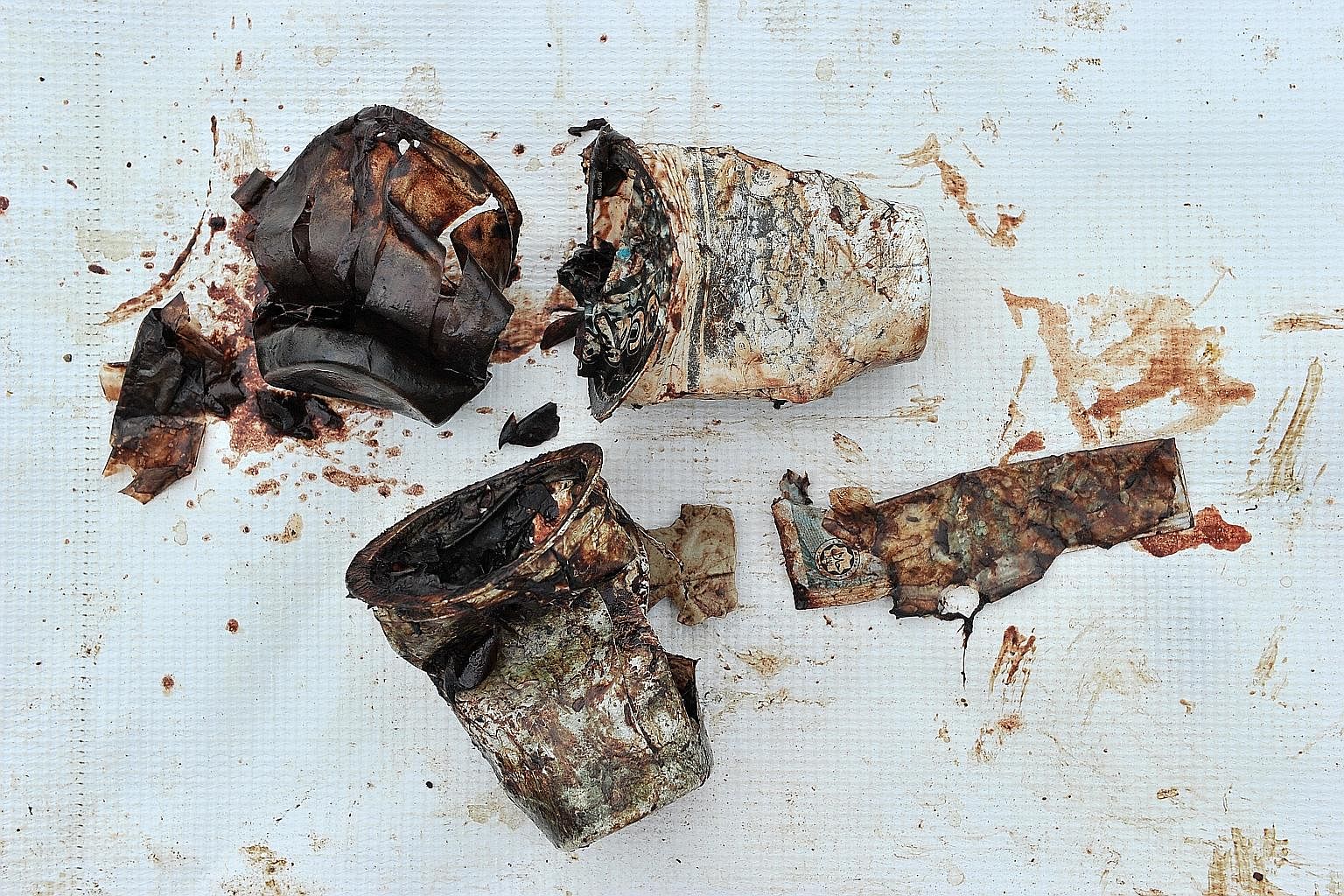
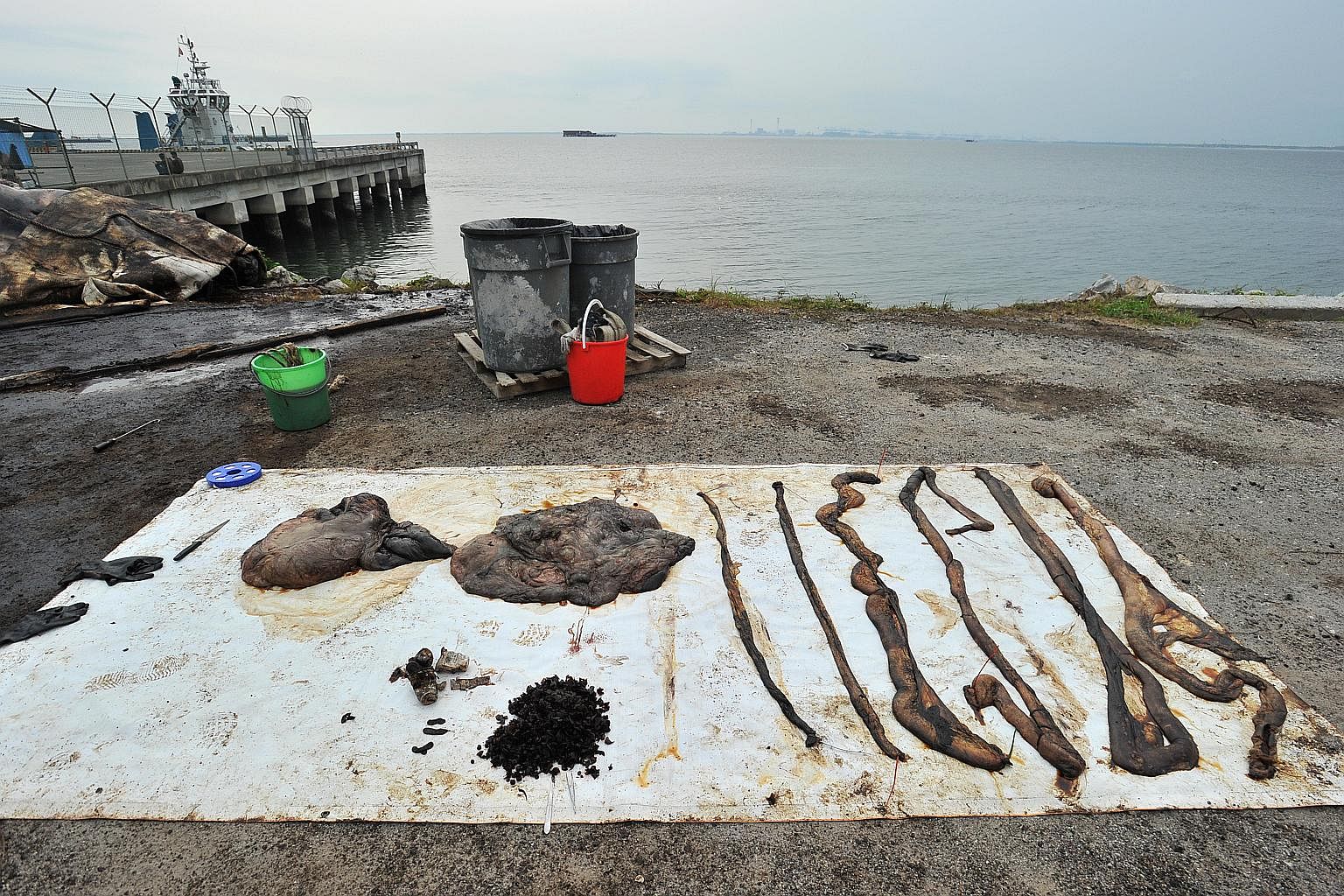
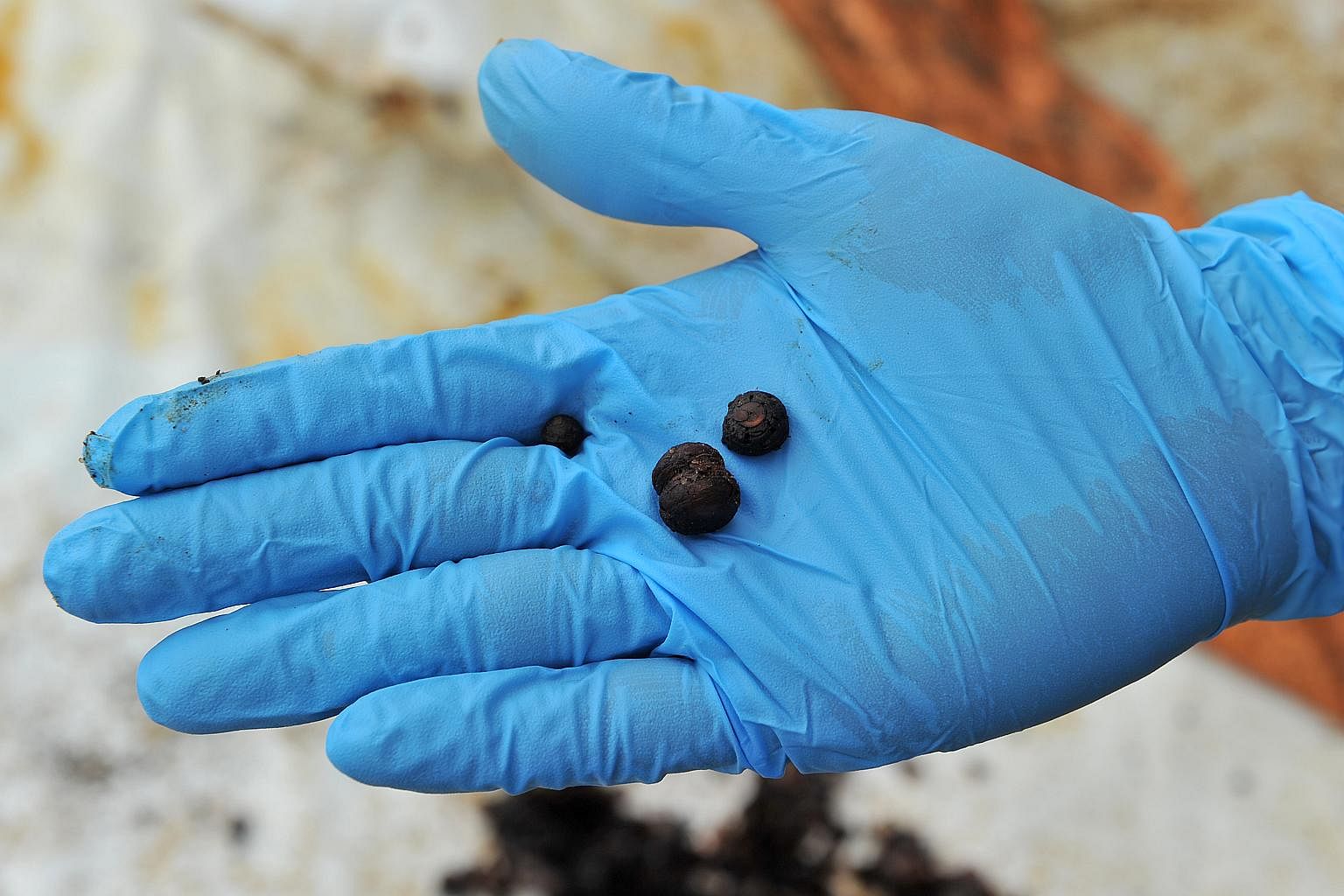
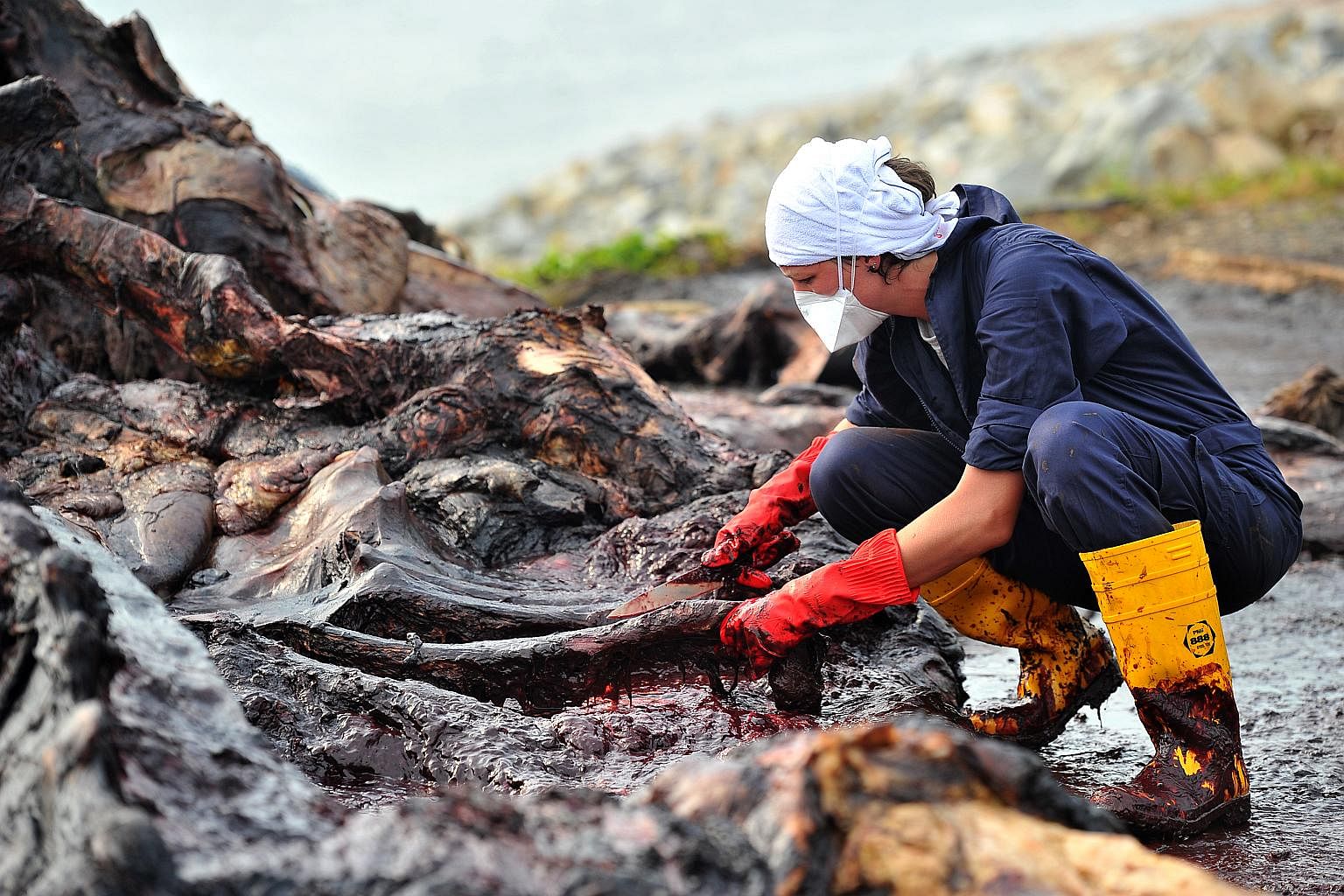
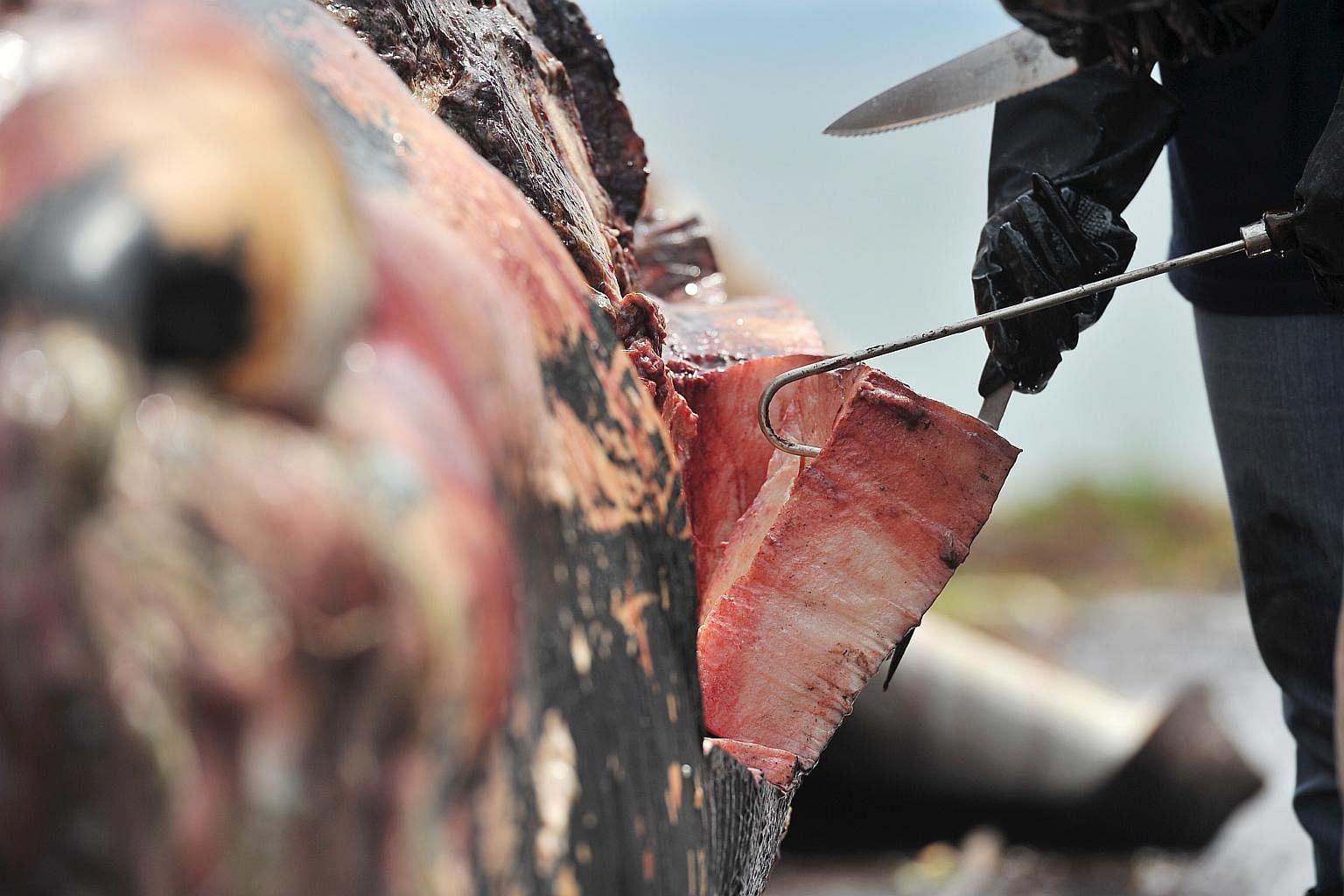
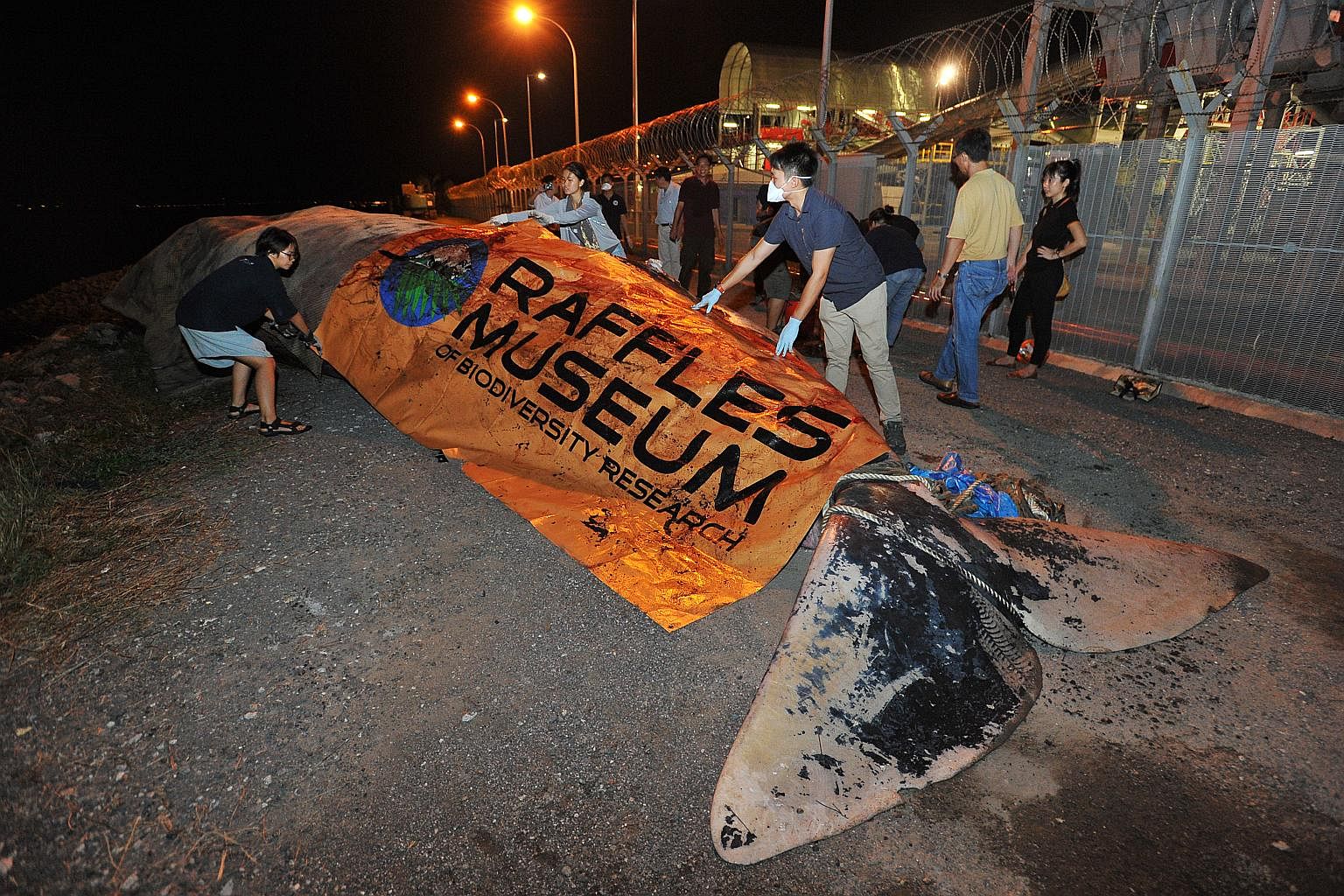
Singapore got its first and only complete large whale carcass in 1892. The 13m-long baleen whale was found beached in southern Malacca that year and its skeleton was subsequently displayed in the old National Museum from 1907 to 1974.
It was then presented as a gift to Malaysia's Muzium Negara and is now housed in the Maritime Museum on Labuan, off Sabah.
So the Lee Kong Chian Natural History Museum was very keen to recover the recent find for its collection.
The carcass had a huge gash on its posterior half. After museum staff inspected it, divers from the Maritime and Port Authority of Singapore secured it with ropes to the buoy tender vessel Panduan, which had to move slowly across the West Johor Strait to prevent disintegration of the specimen in the rough waters.
When the carcass reached the Tuas Marine Transfer Station at about 9pm, the museum's mammals and birds curator, Mr Marcus Chua, and scientific officer Foo Maosheng, started work on collecting tissue samples while it was still "fresh" .
Over the next few weeks, museum staff will collect tissues, examine gut contents and recover the skeleton for research and educational purposes. The skeleton of the "Singapore Whale" will eventually go on show at the museum.
Join ST's WhatsApp Channel and get the latest news and must-reads.
A version of this article appeared in the print edition of The Straits Times on July 16, 2015, with the headline Whale of a find in Singapore. Subscribe
